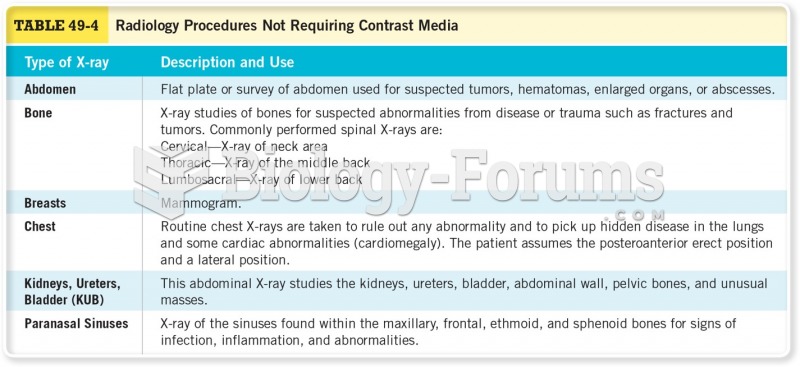|
|
|
Cocaine was isolated in 1860 and first used as a local anesthetic in 1884. Its first clinical use was by Sigmund Freud to wean a patient from morphine addiction. The fictional character Sherlock Holmes was supposed to be addicted to cocaine by injection.
The average person is easily confused by the terms pharmaceutics and pharmacology, thinking they are one and the same. Whereas pharmaceutics is the science of preparing and dispensing drugs (otherwise known as the science of pharmacy), pharmacology is the study of medications.
The B-complex vitamins and vitamin C are not stored in the body and must be replaced each day.
On average, the stomach produces 2 L of hydrochloric acid per day.
There are over 65,000 known species of protozoa. About 10,000 species are parasitic.






